When Does the Baby Tarsier Live on Its Own
Asouth primates tarsiers are very vocal animals and make a variety of calls. These may exist for territorial purposes, a mating call, warning call or an infant�s distress telephone call. Tarsiers will also perform vocal �duets� between mated pairs. There are acoustic differences between the calls of each tarsier species and subspecies and this has been used to assist with species identification. There is as well bear witness that the tarsiers themselves can hear the difference betwixt species and subspecies when played recordings of vocalizations.
Pairs of T. dentatus (Dian�s tarsier), T. tarsier (spectral tarsier) and T. lariang (Lariang tarsier) are known to duet together near their sleeping sites at the end of their night�s activeness. In T. tarsier pairs the duets are often started past the female and can last for several minutes. T. pumilus (pygmy tarsier) do not duet and are known to vocalize more rarely than other species. C. bancanus (western tarsier) and C. syrichta (Philippine tarsier) do not perform duets at all and the corporeality of vocalizations produced varies between sites, with some groups rarely calling. The blazon of vocalizations produced varies between species � spectral tarsiers have fifteen different groups of vocalizations (including alarm calls, food calls, infant calls and play whistles) and the western tarsiers accept four groups of vocalizations. All tarsiers also have scent glands in their face up, tum and genital regions and use odor marking as a form of communication by rubbing their glands of copse, bushes and each other. Tarsiers of all ages urine mark to show their presence. Scent marking may occur more than ofttimes when females are set up for mating (in oestrus). So far, there has been no inquiry conducted into whether tarsiers recognize the scents of their own species when compared with other species.
Life Cycle
Female Philippine tarsiers have a gestation period of 6 months and produce one baby per pregnancy, weighing approximately 25g. Mating can accept identify at any time of the year. Young are built-in with fur and with their eyes open, can cling to branches within i hour of birth and can leap within one month. Being born at an advanced stage protects them from predators soon afterward birth. As mammals, tarsiers produce milk to feed their offspring and Philippine tarsiers provide milk for around 60 days, after which the young tarsier moves on to an adult diet. Young Philippine tarsiers become sexually mature at around ii years and this species are thought to alive upwardly to 20 years in the wild.
Tarsiers do not build nests and mainly carry their immature in their oral fissure or occasionally on their back. Mother tarsiers are known to �park� their offspring in a safe place (commonly a tree) nearby to allow them to forage and feed while keeping an eye on the infant. Spectral tarsiers volition sometimes groom, play, feed and carry infants of others (known as �allocare�) in the wild simply this has not been documented in other species or in captivity.
Spectral tarsiers differ from other species by reproducing seasonally with two mating seasons � one between April and June and the other between Oct and Nov, with young therefore born in leap/early summer and winter. The boilerplate interval between births in wild spectral tarsiers is 13.5 months. Average gestation length in wild spectral tarsiers is slightly longer than Philippine tarsiers at six.three months and for the western tarsier is five.ix months. Western tarsier immature move away from their female parent at around ten days old, they can movement equally an adult at around 22 days and mothers stop conveying their young completely at around forty days. In captivity western tarsiers have been seen attempting to catch nutrient at 37 days quondam, merely in the wild this has been observed at 26 days old. Western and spectral tarsiers are weaned at around 80 days old. The lifespan of western and spectral tarsiers is thought to exist around sixteen years in the wild, although exact lifespans are not known.
In captivity tarsiers accept shorter lifespans than those proposed for wild tarsiers � T. syrichta are known to survive somewhere betwixt 8 � 12 years in captivity, although one detail animal was thought to have been around 16 years one-time when she died. The longest lived T. bancanus in captivity survived to around 16 years and for T. spectrum around 12 years. Tarsiers announced to be difficult to care for in captivity and show shorter lifespans than their wild counterparts and this may be due to their need for alive food or their shy nature. There is much about the tarsier species which is still unknown and this includes the lifespan of each of the species in the wild.
Diet and Feeding
Tarsiers are the only completely cannibal primates and take been seen to eat insects, lizards, snakes and birds - leaping through the copse to catch their prey. They are known to leap upwards to 2m in altitude and ane.5m in height. Tarsiers are also known to eat almost every part of their catch including bones and anxiety. There have been reports of western tarsiers feeding on fruit bats in Borneo, even so this is thought to be somewhat unusual and information technology is thought their diet is most often largely fabricated upward of insects. Tarsiers have stiff jaws and teeth and have a wide mouth to enable them to feed upon large prey. There have been reports of tarsiers catching birds in flight past leaping from tree to tree and are helped past their adhesive finger pads and specialized legs and feet. Their large eyes and areas help them to locate prey in darkness and they are able to plow their heads nigh 360�. Tarsier hearing is so sensitive that they are able to find prey by hearing lone and frequently shut their eyes while catching food, perhaps to protect their large eyes from harm.
In the past it was reported that tarsiers fed on charcoal and burnt logs on the forest floor, yet, this was plant to be false when it was discovered that they were actually using their long fingers to pick insects from inside the logs. Tarsiers do not survive well in captivity in function due to their specific feeding needs � live food is not permitted in virtually Zoos and parks and this will impact upon the health and wellbeing of tarsiers in captivity. There is little specifically known almost the diet and feeding behavior of each species/subspecies and at that place may be interesting differences discovered in futurity.
Continue on page 5
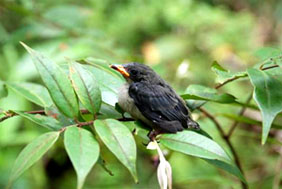
Tarsiers can feed on small birds. � Pierre Fidenci
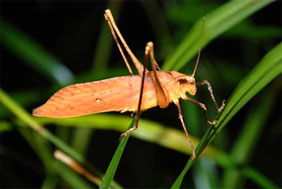
Grasshopper is part of the diet of the Philippine tarsier. � Pierre Fidenci
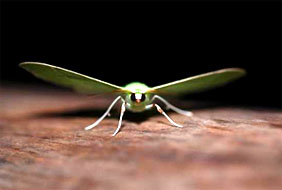
Tarsiers feed heavily on nocturnal insects. � Pierre Fidenci
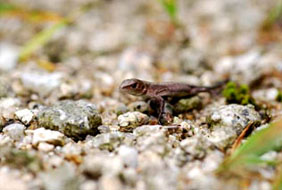
Tarsiers prey on small-scale reptiles similar lizards. � Pierre Fidenci
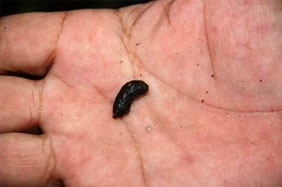
A dung of the Philippine Tarsier constitute in the field. � Pierre Fidenci
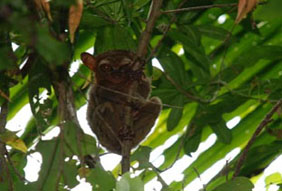
A pregnant Philippine tarsier observed in the field. Tarsier has a gestation menstruation of six months. � Pierre Fidenci
Source: https://www.endangeredspeciesinternational.org/tarsiersection4.html
0 Response to "When Does the Baby Tarsier Live on Its Own"
Enviar um comentário